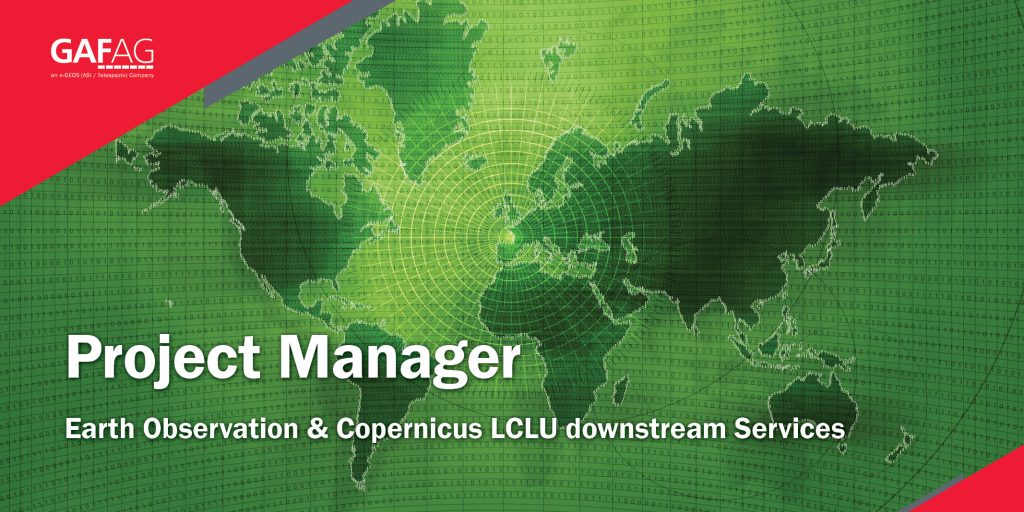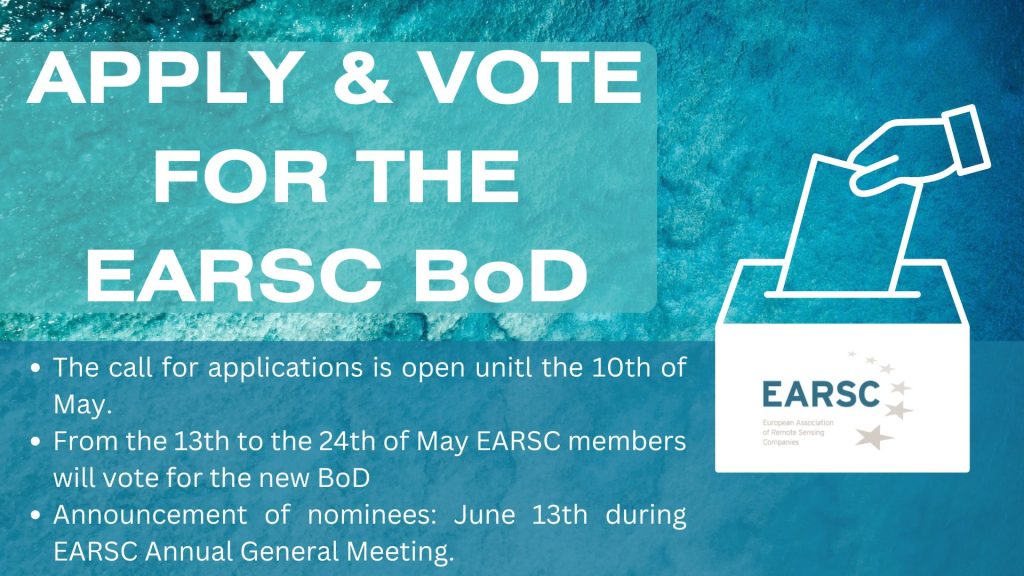
The voice of the Earth Observation
Industry
Barents bloom, Sentinel-2A - processed by ESA, CC BY-SA 3.0 IGO

Discover the largest European
Earth Observation Network
Lake Balkhash, Kazakhastan, Sentinel 2 - processed by ESA, CC BY-SA 3.0 IGO

EARSC promotes the understanding
of our Planet for societal benefits
Brussels, Spot 5 Sqtellite - Airbus Defence and Space
EARSC 4 Pillars
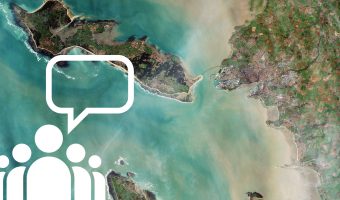
Representing the Members
The core pillar of our activities is to support and promote our members. We achieve this goal mainly through projects which we undertake (see projects). Members’ views are gathered through a series of ad-hoc working groups dedicated to important topics. We inform our members through a monthly report and a dedicated portal about important news and information, as announced bid opportunities – and dedicated e-mails for key items.
Read More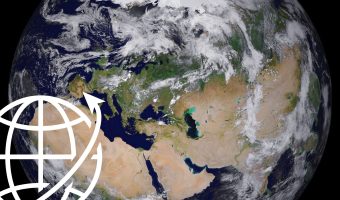
Market development & Internationalization
EARSC is engaged in a wide range of activities to develop new markets and business opportunities for our members. Our strategy is to engage users, identify needs and stimulate demand for European EO services both in Europe and abroad with complementary commercial and geographical approaches.
Read More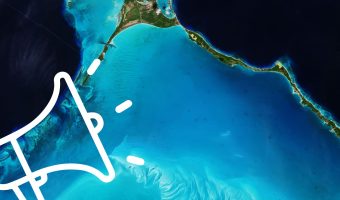
Promoting the industry
EARSC employs a range of sophisticated digital tools to promote the European EO sector. EARSC has three main digital tools which cover creating a shared vocabulary (EARSC TAXONOMY) , providing a common space to find EO companies, and a common space to discover ‘online’ EO services.
Read More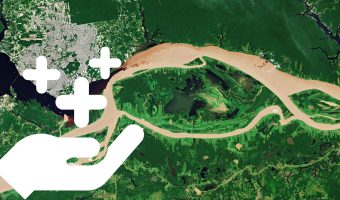
Showing the value of Earth Observation
The Earth observation sector delivers a wide range of social and environmental and economic benefits to citizens of Europe and the world. To properly and consistently value these impacts, EARSC leads the Sentinel Benefits Study (SeBS) project in which we measure the total societal impact of products and services coming from Sentinel satellite data.
Read MoreEARSC NEWS
GMES Sentinel-2 satellite contract signed
ESA PR 24-2008. The European Space Agency and Astrium today signed a €195 million contract to provide the first Sentinel-2 earth observation satellite, devoted to monitoring the land environment, as part of the European GMES programme. As prime contractor, Astrium is responsible for the design, development and integration of the satellite, which will perform a high-end multi-spectral optical imaging mission.
Eurostars research funding for SMEs
Eurostars is a EUR 400-million Europe-wide programme set up to fund SME-driven research and development (R&D) activities in 24 of the EU’s Member States, plus Iceland, Israel, Norway, Switzerland and Turkey. The programme is open to consortia of research-oriented enterprises from these 29 countries. Eurostars is open for continuous funding applications, with an average of two submission deadlines each year. The next deadline for submissions is 21 November 2008.
Safe guarding Earth's data
The amount of information being generated about our planet is increasing at an exponential rate but, say the European Space Agency, it must be easily accessible in order to apply it to the global needs relating to the state of the Earth.
Thales Alenia Space Wins Euro 305 M Sentinel-3 Contract
Thales Alenia Space announced that it has signed a 305 million Euro contract with the European Space Agency (ESA) to supply the Sentinel-3 Earth observation satellite for the Global Monitoring for Environment and Security (GMES) program.
Contract Signed For ESA's Sentinel-3 Earth Observation Satellite
The European Space Agency and Thales Alenia Space today signed a €305 million contract to provide the first Sentinel-3 earth observation satellite, devoted to oceanography and land-vegetation monitoring, as part of the European GMES programme.
ERDAS IMAGINE 9.2 Application Products and License Servers Support Microsoft Windows Vista
ERDAS, Inc. announces the full support of the Microsoft Windows Vista operating system in ERDAS IMAGINE 9.2. Microsoft Windows Vista is fully supported throughout the entire ERDAS IMAGINE suite of software products, including IMAGINE AutoSync, IMAGINE DeltaCue and IMAGINE InSAR.
The ESA-FAO GEOportal – Operational Gateway to GEOSS
(April 11) The GEOportal is one of the three candidates developed in response to a set of requirements from the GEO Secretariat aiming at the implementation of a GEO Web Portal serving the GEO User Community.
Indian space technology needs a boost
Integrated observation system consisting of both land and space technology can go a long way in establishing India’s credibility in the international space programme scenario, said K Kasturirangan, Rajyasabha member and former Chairman, Indian Space Research Organisation (ISRO) here on Tuesday while addressing the concluding function of golden jubilee celebrations of the National Environmental Engineering
Blue Marble’s Geographic Calculator Supports INSPIRE Parameters
Blue Marble Geographics (www.bluemarblegeo.com) announces new support for the Infrastructure for Spatial Information in Europe (INSPIRE) parameters, including the Ordnance Survey Ireland (OSi) Irish Grid polynomial datum transformation definition.
2008 Geospatial Technology Report Is Available
The Geospatial Information & Technology Association (GITA) announced the publication of the 2008 Geospatial Technology Report.
First Satellite Application Facility (SAF) Products available via the EUMETSAT Archive
(April 8). EUMETSAT reached an important milestone on 2 April by integrating the first set of metadata describing SAF products into its Operational Archive, allowing Users to query and order SAF products via the EUMETSAT Archive Web services.
Com Dev To Develop Payload Equipment For Asian Observational Satellite
Com Dev International Ltd. will develop components for an Earth observation satellite being developed by an unnamed Asian customer, Com Dev announced April 4.
Satellite images reveal collapsing ice shelf
Taiwan’s FORMOSAT-2 satellite is playing an integral role in assisting the international scientific community monitor the breakup of an ice shelf in Antarctica by providing detailed real-time images of the phenomenon, which began Feb. 28.
ESA to study forest fires from orbit
A new ESA study aims to deduce better ways of characterising the devastation caused by fires. It will develop computer techniques to improve the already existing methods of interpreting satellite data that shows burnt areas on the surface of the Earth.
Announcing the new ERDAS, The Earth to Business Company
Leica Geosystems Geospatial Imaging today announced that it has changed its name to ERDAS, Inc. Recently making several acquisitions, the combined company is reintroducing the ERDAS name and will do business under this name moving forward.
MEMBERS NEWS


